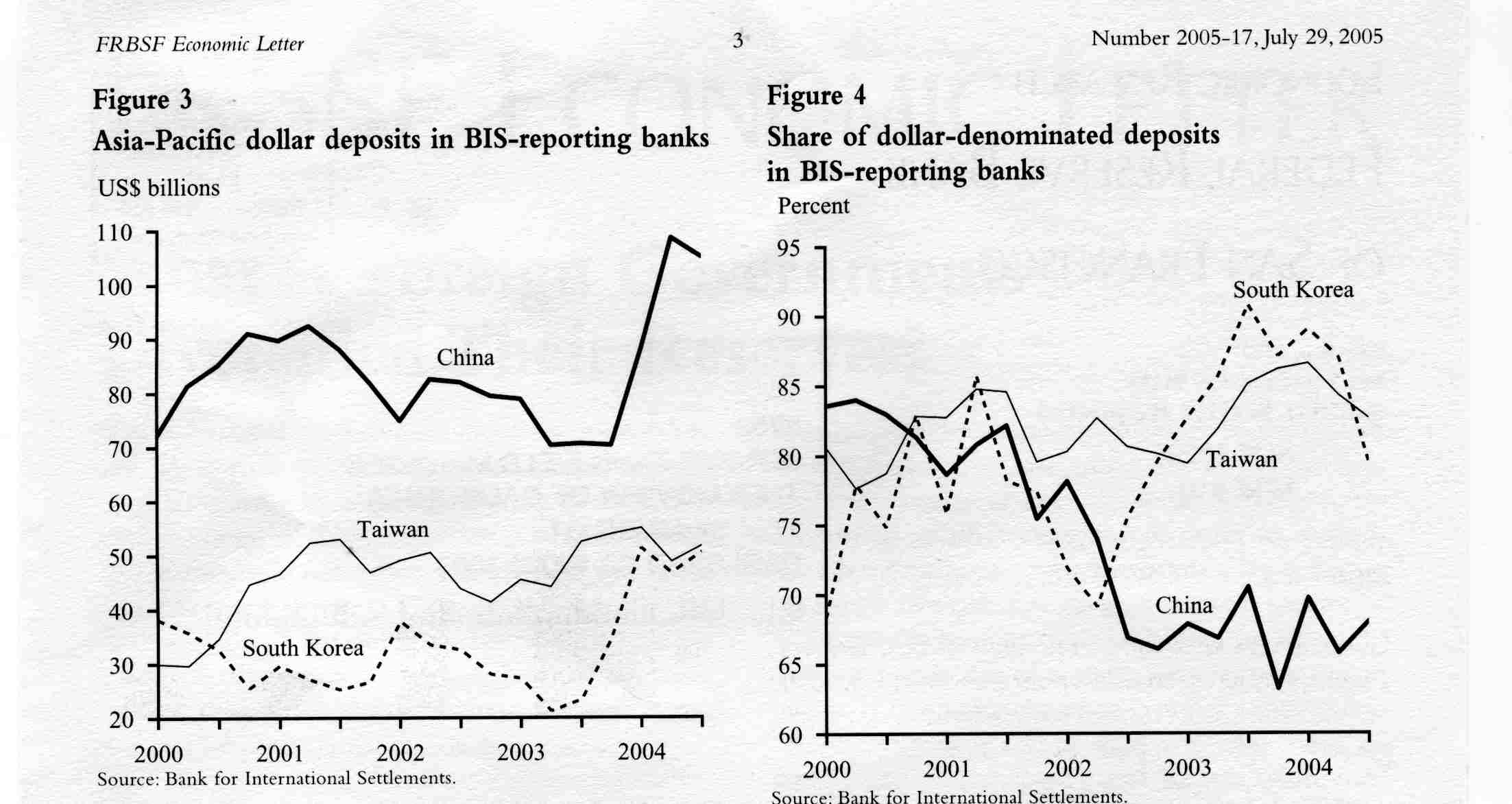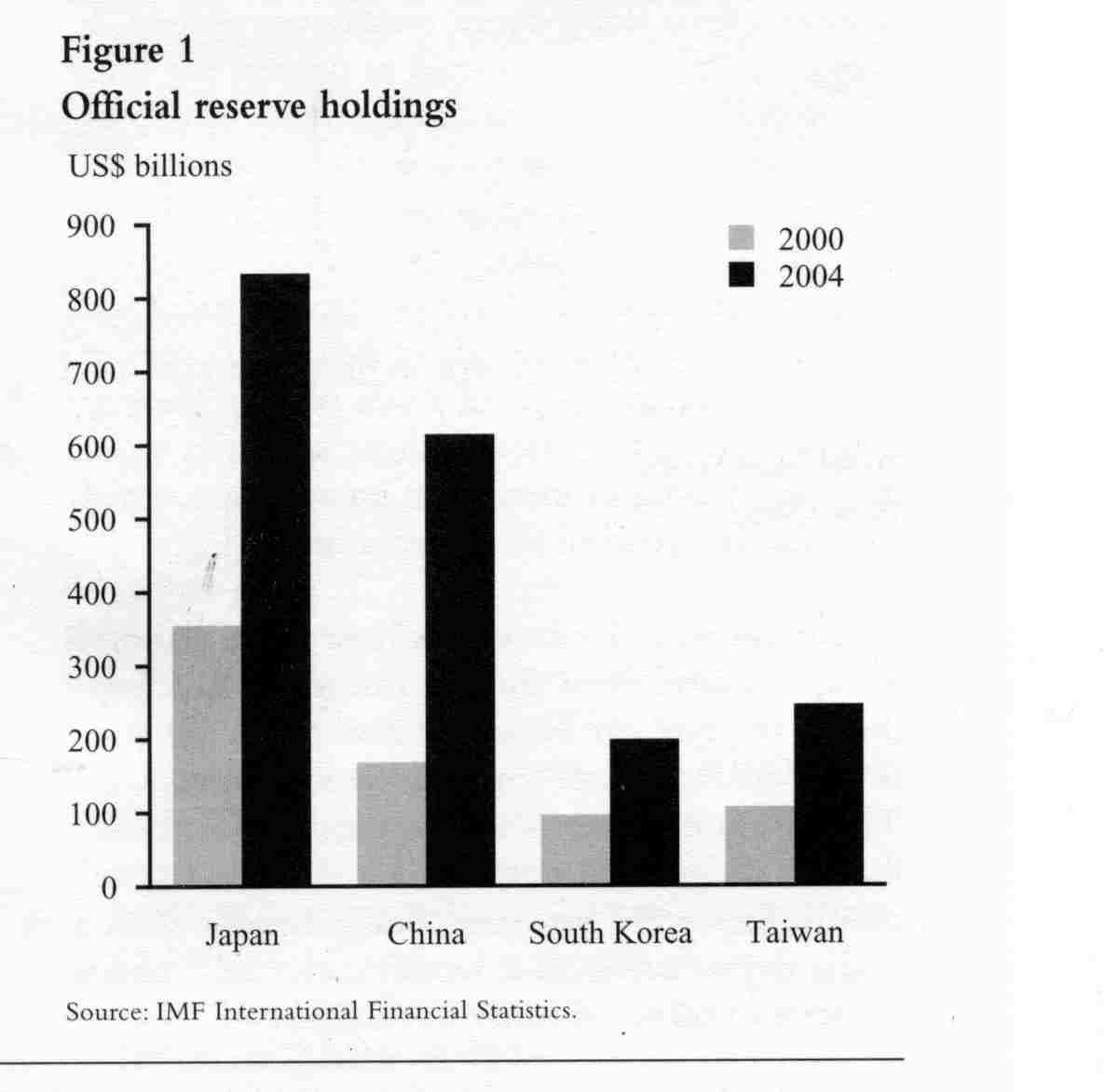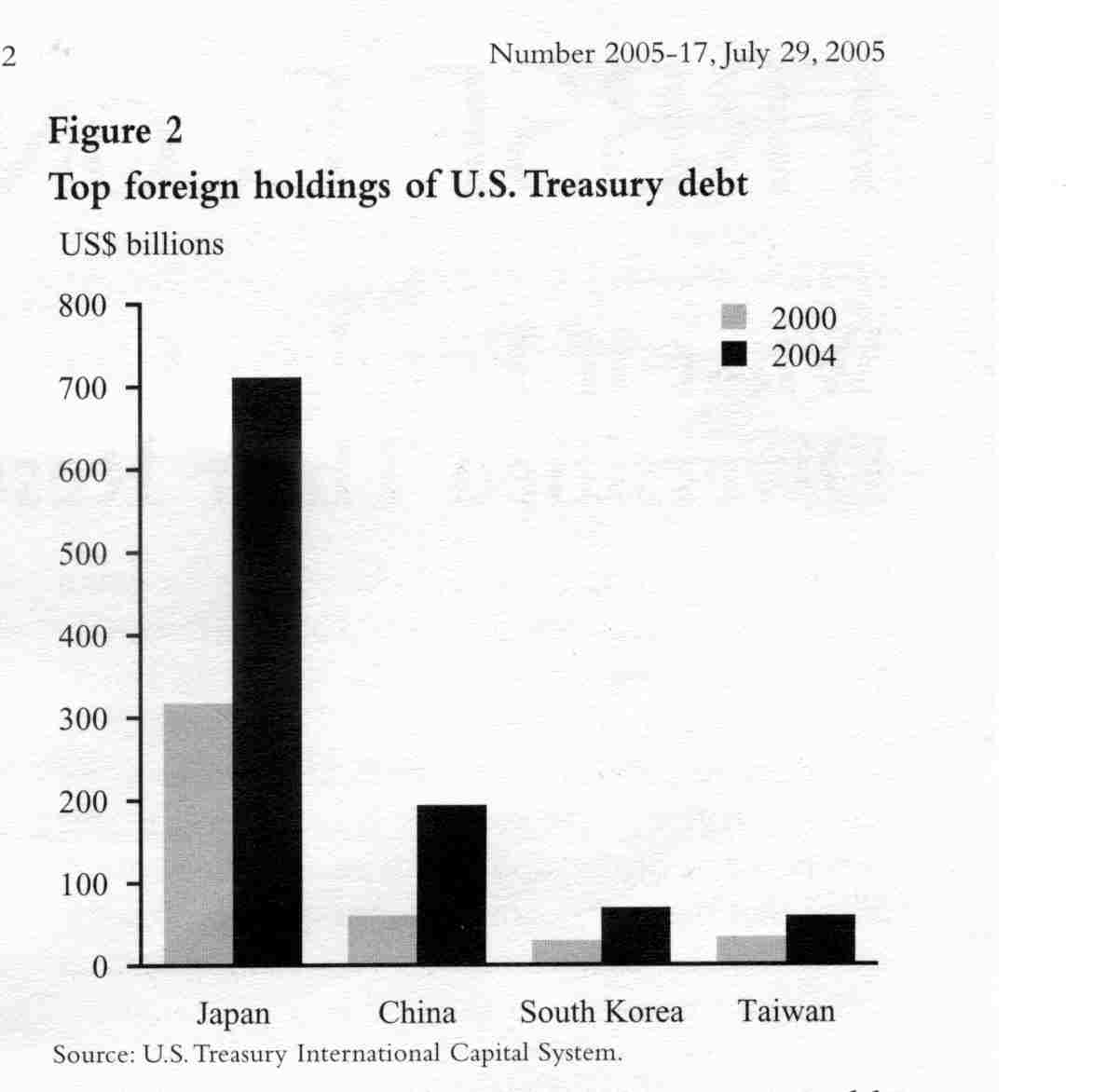|
ECONOMICS |
|
Greenspan & Federal Reserve's warning about debt
Things have deteriorated since then. Things have gotten worse, the hole the neocons has dug is much deeper. The economic stats are worse than bad: the trend is toward
greater disparity of wealth and on top of that the Fed Eyes Asset-price Rises Closely: Greenspan Jackson Hole,
Wyo (Ruters), Federal reserve Chairman Alan Greenspan said on Friday (8/26/5) the U.S. central bank was paying increasing
attention to asset price rises since these were having a growing impact on world economic activity. He warned also that buying
power fueled by higher prices for such assets as stocks and homes could disappear if investors turn cautious.
In remarks prepared for delivery to the annual central bank
symposium sponsored by the Kansas City Federal Reserve, the Fed chief said the vast increase in market value of assets stemmed
partly from faith that economic risks were low. "Such an increase in market value
is too often viewed by market participants as structural and permanent," said Greenspan, who is due to step down as the U.S.
central bank's chairman at the end of January. "To some extent, those higher values may be reflecting the increased flexibility
and resilience of our economy." But he added that "newly abundant liquidity can readily disappear" if investors grow wary for
some reason and demand a higher risk premium for lending. Greenspan said the Fed had to focus on such issues since
global economic activity was being influenced by capital gains on various types of assets and on the debt that sustains them. "Our forecasts and hence policy are becoming increasingly
driven by asset price changes," the Fed chief said. Economists said his remarks indicated the Fed will press
on with its steady-as-she-goes rate rise campaign. "From his comments, it is
clear that the Fed will keep raising rates, hoping to bring the housing market to a very soft landing," said Drew Matus, an
economist at Lehman Brothers in New York. Greenspan said increased investor caution, by elevating
the premiums investors demand in compensation for risk, could lead to a swift reversal in asset values if it forced the liquidation
of debts that support them. "This is the reason that history has not dealt kindly
with the aftermath of protracted periods of low risk premiums," he said. In wide-ranging remarks that touched on the changes
in policy-making over his 18-year tenure, the Fed chairman said the U.S. central bank has moved toward a risk-management approach
as globalization has become more important. Forecasts of change in the global
economic structure -- for that is what we are now required to construct -- can usefully be described only in probabilistic
terms," he said. "In other words, point forecasts need to be supplemented by a clear understanding of the nature and magnitude
of the risks that surround them." If flexibility could be maintained, he said,
"some of America's economic imbalances, most notably the large current account deficit and the housing boom, can be rectified
by adjustments in prices, interest rates and exchange rates rather than through more-wrenching changes in output, incomes
and employment." He said the growing stability of the world economy over the
past decade seemed to be encouraging investors to accept less compensation for the risks they take. "Whether the currently elevated level of the wealth-to-income ratio will
be sustained in the longer run remains to be seen," he said.
Greenspan said trade protectionism and a failure of the U.S. government to come to grips with fiscal problems were
a concern. "The developing protectionism regarding trade and our reluctance to
place fiscal policy on a more sustainable path are threatening what may well be our most valued policy asset: the increased
flexibility of our economy," he said. Article
below from Federal Reserve Board of San Francisco, Number 2005-17,July 29, 2005 FRBSF What Greenspan
is worried about, read and worry--jk What If Foreign Governments Diversified Their Reserves? |
|
World financial markets paid close attention when officials from both South Korea and Japan said that their
governments were considering diversifying their holdings of foreign reserves (Dougherty 2005 and Koizumi 2005). Many analysts
thought these announcements were partly in response to the past depreciation of the dollar; if true, then it seemed likely
that those two governments would sell some of their dollar-denominated assets, putting further downward pressure on the dollar. Since then, officials in both countries have insisted that they were not considering any major changes
to the policy of reserve holdings. Nonetheless, the potential for a sell-off of dollar-denominated assets by foreign governments
has raised some questions about the consequences of such a move. This Economic Letter attempts to put these issues
into perspective. It begins with a review of recent trends in the holdings of such assets by foreign governments and
a description of how these governments use them. Then it explores some of the risks the U.S. economy might face if foreign
governments sold off large quantities of their dollar-denominated reserves. It concludes with a discussion of some of
the costs such a sell-off would pose to foreign countries themselves. Recent trends in holdings of foreign exchange reserves and how they are used Foreign exchange reserves are holdings of foreign-denominated securities by foreign governments. One of
the major uses of foreign exchange reserves is to intervene in the foreign exchange market in order to influence the value
of the domestic currency and to serve as collateral for foreign borrowing. Suppose, for example, that a country
wants to see the value of its currency depreciate, so that the cost of its exports will be relatively lower and therefore
more attractive to foreign buyers. The government would then buy foreign-denominated securities and pay for them with domestic
currency, thus leading the domestic currency to depreciate. Governments
may also intervene in the foreign exchange market to keep the local currency stable relative to another currency in order
to reduce the risk of exchange rate fluctuations. By reducing exchange rate risk, foreign governments may promote greater
foreign trade and financial flows. A more dramatic use of foreign reserves may occur when the domestic currency is under a
speculative "attack." Reserves can be used as a "war chest" to defend the local currency and, by extension, the domestic financial
systems, in case of future runs on their currency. Following the 1997-1998 Asian financial crises, many East Asian governments
moved to accumulate large amounts of reserves to serve as collateral for their domestic financial systems and prevent future
currency crises (Figure 1). At the end of 2004, South Korea held over $200 billion in reserves, more than twice the level
it held in 2000. Figure
1
Official
reserve holdings Total worldwide foreign reserves holdings reached $3 trillion at the end of 2004, up from $2.4 trillion
in 2003, with the largest holders being Japan, at $834 billion, and China, at $615 billion. Most foreign exchange reserves
are held in the form of dollar-denominated securities; one reason for this is that foreign governments like the highly liquid
market for U.S. Treasury securities. As of December 2003, dollar-denominated securities accounted for roughly 70% of total
reserves, while euro-denominated reserves accounted for about 20% (BIS 2004). At the end of 2004, foreign governments
held $1.2 trillion of U.S. Treasury securities, almost double the $609 billion held in 2000. Governments keep the composition of their reserves a well-guarded secret. Therefore, there are no data
on the amount of dollars that individual foreign governments hold in their reserves. However, the U.S. Treasury does have
estimates of total holdings—that is, official plus private—by country. According to those estimates, at the end
of 2004, Japan held $712 billion, China $193 billion, and South Korea $69 billion (Figure 2). Most of these securities are
believed to be held by the central bank of each country. Effects of a sale of dollar-denominated reserves on the U.S. economy The sale of dollar-denominated reserves could have negative effects along several dimensions of the U.S.
economy. First, it would tend to depress the value of the dollar vis-a-vis other currencies. A depreciation of the dollar
in turn would tend to raise import prices, which could feed through to higher consumer price inflation. Since 2002, the dollar
has depreciated by 25.7%, and import prices have increased by 6.6%. If the sale of dollar-denominated reserves took the form
of a sale of U.S. Treasury securities, then the price of these securities would decrease, causing an increase in interest
rates, which may also be harmful to the economy. Furthermore, U.S. consumers have benefited from cheap imports from abroad, and many U.S. producers
depend on imported raw materials and intermediate inputs for their production plans. Thus, both consumers and producers would
be hurt by an increase in the price of intermediate inputs. Exporters, however, would benefit from a dollar depreciation,
as it would make their goods cheaper in terms of other currencies. A depreciation
of the dollar would eventually lead to an improvement in the current account deficit—which reached a record 6.3% of
GDP in the fourth quarter of 2004—through its negative impact on imports and positive impact on exports.
Figure
3 Asia-Pacific
dollar deposits in BIS-reporting banks Larger amounts of securities denominated in other currencies in the future instead of by selling current
holdings of dollar-denominated assets. For example, it is possible that the euro will grow in importance as an international
reserve currency as the European Central Bank cements its low-inflation performance and as the euro financial market develops. A sale of dollar-denominated reserves may be costly to foreign economies In many Asian countries, economic growth has been led by the export sector, which would be hurt by an appreciation
of the local currency vis-a-vis the dollar. In fact, the economies of Japan and South Korea would grow more slowly were it
not for their dynamic export sectors. Thus, a significant move away from dollar-denominated reserves would entail significant
costs to foreign economies. A sale of dollar-denominated assets that leads to a large depreciation of the dollar would generate large
capital losses for foreign governments, as the value of their assets would drop with respect to their domestic currency. On
the other hand, since the United States borrows internationally mostly in terms of dollars and since most of its foreign assets
are denominated in foreign currencies, it would receive most of the capital gains, as the value of its liabilities would drop
relative to the value of its assets. Tille (2005) estimates that a 10% depreciation of the dollar leads to a valuation loss
for foreign economies equivalent to about 4% of U.S. GDP. Conclusions This Economic Letter posed the question: What if foreign central banks diversified their reserves?
The Figure
4 answer
has several dimensions. A sale of dollar-denominated reserves would depress the value of the dollar vis-a-vis other currencies,
thus raising import prices for U.S. consumers and feeding into higher consumer price inflation. If the depreciation is sudden
and leads to a rapid reversal of the current account, it may depress investment and consumption. However, a sale of dollar-denominated
securities would also be costly to foreign economies. Foreign governments would be exposed to large capital losses, and an
appreciation of their currencies would make their exports less competitive. Finally, the case of China makes it clear that
if foreign governments want to diversify their holdings of reserves, they can do so not only by selling dollar-denominated
securities but also by buying into securities denominated in other currencies.
Diego
Valderrama Economist References [URLs accessed July 2005.] Bank for International Settlements. 2004. Annual Report. http://www.bis.org/publ/ar2004e.htni
Bank for International Settlements. 2005. BIS Quarterly RaAeiv
(March). http://www.bis.org/publ/r_qt0503.htm Dougherty, Carter. 2005. "Dollar Plunges on Proposal by Korea Bank to Diversify." Neu'York Times (February
23, 2005) sec. C, p. 12, col. 5, national edition. Koizumi, Junichiro. 2005. Remarks before Japanese Parliament, March 10, 2005. Setser, Brad, and Nouriel Roubini. 2005. "How Scary
Is the Deficit?" Foreign Affairs. (July/August) pp. 194-200. Tille, Cedric.
2005. "Financial Integration and the Wealth Effect of Exchange
Rate Fluctuations." Mimeo. FRB New York. Bush’s Big Give Away On June 7 President George W. Bush celebrated his first
big legislative victory. Only two weeks earlier his new administration had suffered a terrible political blow, when a Republican
senator left the party and gave Democrats a one-vote majority in the Senate. But the administration was nevertheless able
to persuade a dozen Democratic senators to vote its way and authorize a tax cut that would decrease federal tax revenues by
some $1.35 trillion between then and 2010. This was presented at the time
as a way to avoid the "problem" of paying down the federal debt too fast. According to the administration's forecasts, the government was on the way to running up $5.6 trillion (independent forecasts are $7 trillion, and there is interest payment on top of that—jk) in surpluses over the
coming decade. The entire federal debt accumulated between the nation's founding and 2001 totaled only about $3.2 trillion—and
for technical reasons at most $2 trillion of that total could be paid off within the next decade. 4 Therefore some
$3.6 trillion in "unusable" surplus—or about $12,000 for every American—was likely to pile up in the Treasury.
The administration proposed to give slightly less than half of that back through tax cuts, saving the rest for Social Security
and other obligations. A year later the budget would show a deficit of $158 billion; a year after that $378 billion. By the
end of Bush's second term the federal debt, rather than having nearly disappeared, as he expected, had tripled. Through four decades and through administrations as diverse as Lyndon Johnson's and Ronald Reagan's, federal
tax revenue had stayed within a fairly narrow band. The tax cuts of 2001 pushed it out of that safety zone, reducing it to
its lowest level as a share of the economy in the modern era. Late in 2003 Congress
dramatically escalated the fiscal problem by adding prescription-drug coverage to Medicare, with barely any discussion of
its long-term cost. David M. Walker, the government's comptroller general at the time, said that the action was part of "the
most reckless fiscal year in the history of the Republic," because that vote and a few other changes added roughly $13 trillion
to the government's long-term commitments. For the
best account of the Federal Reserve (http://www.freedocumentaries.org/film.php?id=214). One cannot understand |


